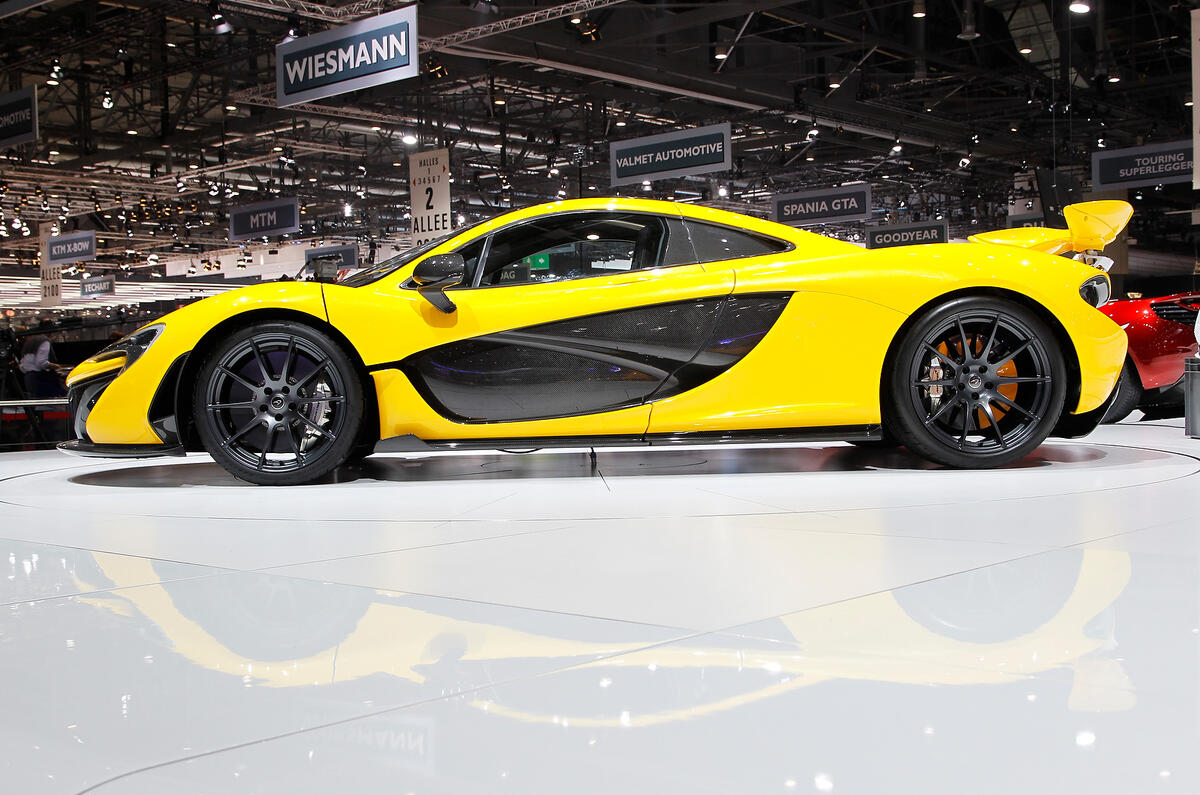McLaren’s mighty P1 hybrid flagship looks like becoming the first hypercar ever to deliver properly on the elusive ‘F1-for-the-road’ promise that manufacturers have been making for their fastest road cars for more than a quarter century.
It has the huge V8-plus-electric power (903bhp) and ultra-high price (£866,000) that you’d expect of the spiritual successor to the illustrious McLaren F1 of 1993, but what really sets the P1 apart is its ground-breaking active aerodynamics package.
While delivering a svelte drag factor of 0.34 in ‘clean’ form, the P1 can automatically deploy a rear-mounted wing and two flaps ahead of the front wheels, in appropriate driving modes, to deliver such unprecedented levels of downforce for a road car that driving “actually gets easier as the car goes faster”.
Even well short of its 218mph top speed, the P1 can generate 600kg of downforce, an amount equal to many Le Mans racers and about five times greater that of the recently launched McLaren MP4-12C. Its advantage over non-McLaren rivals is even greater.
“The P1 is designed to be driven to a racing circuit with great levels of comfort and refinement,” said McLaren Automotive managing director Antony Sheriff, “and then to be used on the racing circuit where it will offer an experience matched only by purpose-built racing cars.”
The P1 uses the all-carbon chassis tub recently created as the basis for all new-era McLarens and launched with the MP4-12C. In another direct reference to F1, the new supercar has a special, race-bred ‘recipe’ for some composite components — claimed to be twice as stiff as steel — that form its core body/chassis.
This structure has relatively few parts and weighs only 90kg, which, McLaren engineers say, is lighter than any other road car’s while delivering F1 levels of rigidity and safety. It also forms the engine airbox, roof snorkel and the roof itself, provides housings for the battery and power electronics, and shapes the aerodynamic side pods that feed air to the engine’s cooling system.
The P1 is 300mm longer than the 20-year-old F1 but only a shade wider and longer than the MP4-12C. Against its most recent compatriot, it grows 83mm (three inches) — the extra length aids the aero package — and it is 29mm (an inch) lower and 37mm (1.5 inches) wider. McLaren claims “substantially smaller” frontal area than the MP4-12C and claims that the P1 is also smaller in area than any other production sports car.
































Join the debate
Add your comment
Stunning
piece of british design and engineering..........I really hope this has the "soul" of the F1, something seemingly lost in the MPC12.....
That name?
I don't know if anybody has mentioned this before, but why have they named it after a 13 year old Subaru Impreza?
Considering it has less than
Considering it has less than half the specific power output of an F1 car (permanent power) I highly doubt that it delivers an f1 type experience. The Ariel Atom 500 V8 is probably quite a bit closer (similar weight, 2/3 the power).